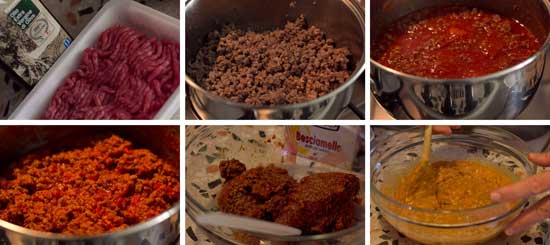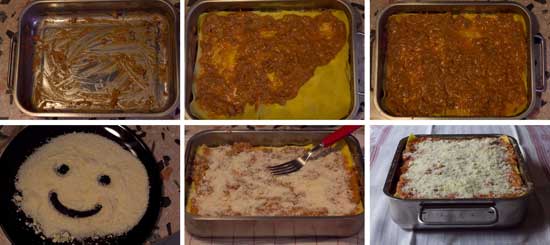Timothy
Head Chef
OMG, I had to scroll the page over, just to see your avatar! HA!I just looked at the pound of pasta...
What a hoot!
OMG, I had to scroll the page over, just to see your avatar! HA!I just looked at the pound of pasta...
But it will be worth it to enjoy Luca's lasagna, going to make it this weekend for my family and mother-in-law.

I firmly believe I'm more athen a


Luca and Timothy, you can snort all you want, but from what I read you both are awesome chefs and I have learned alot from you. Keep it coming. Oh go Detroit Tigers.

But question, how to you use food themselves as seasonings?
Timothy said:Using hot peppers is one of the more obvious ones. There are maybe a dozen distinct flavors of spicy peppers. Used in the proper amounts with dishes like corn, it can turn them from a bland "ok" dish to one that has real zip.
The various types of onions, or even just the juice of them. Citrus zest. Capers are really a flower that is used as a seasoning. Apple peels can be pressed and the juice used over a salad with a little lime or lemon zest.
I'll bet all those fabulous cooks on this group use many, many foods as flavorings (seasonings), for dishes that go from bland every-day food to something fantastic when another food is used to accent it's flavor.
Using a food processor to extract the juice of things like different nuts and then using just the nut juice over a roast. Everyone will say "This is so fantastic! How did you make this?"
Even the timing of when you use the items can make a huge difference in the final flavor. There are thousands of combinations. Tasting different skins and juices and then imagining them on a certain type of food. That's how you find them. "This would taste really good with...."
You see what I mean?
Luca and Timothy, you can snort all you want, but from what I read you both are awesome chefs and I have learned alot from you. Keep it coming. Oh go Detroit Tigers.
Princess, I worked in restaurant kitchens when I was young, but I was just the humblest unskilled worker, just cleaning and washing and preparing cold cuts plates! Being a chef is a TOUGH job, and it requires endless passion, intelligence, skills and art.
It appears to me, and I believe everyone that reads you on this forum, that you do have endless passion, definitely the intelligence, skill and art. I made your lasagna for my family dinner, the mother-in-law was coming over and she loved it, it was the best I have ever had, no thanks to me.
Please don't tell your fiancee', the only addition was mushrooms, I am Polish, and the Poles love their mushrooms, they were thinly sliced cremini. I had an anti-pasta salad and [FONT="]tiramisu for dessert. I definitely racked up the points today. Thanks again for your expertise.[/FONT]
I’m proposing you here, my precious guests, the lasagna recipe as “tuned” by my late mother-in-law Franca. Her family moved from Genoa to the Emilia region during the Second World War, to flee the Allied bombing. And, as you may know, Emilia is the homeland of lasagna (and tortellini, tagliatelle, parmigiano, lambrusco, balsamic vinegar, mortadella, Ferrari, Lamborghini, Maserati, and so on and so forth…). This recipe uses an overly simple ragù, which is the meat and tomato sauce as we call it in Italy (the Bolognese sauce, for the rest of the known world). It is not the classic recipe, the canonical “Lasagne alla Bolognese”, but since it was good for my mother-in-law, it MUST be good enough for you and me…
Serves 4 (but you have to try them to be sure, since eating is what makes your appetite grow…)
500 g lasagna (15 sheets/noodles) | 400 g minced beef (with some fat, not too lean) | 400 g tomato sauce | 1 tablespoon concentrated tomato | 1 tablespoon olive oil | salt | 500 g bechamel | 150 g grated Parmigiano Reggiano cheese
Let’s go with our lasagna!
In a nutshell, you have to prepare the sauce, prepare the pasta, assemble everything and bake the final mix. It’s better to prepare the sauce first, maybe a day before the lasagna if you can, then proceed with the lasagna, the mixing and the baking.
(1) -- Let’s start from the meat sauce. Heat 1 tablespoon oil in a pan, then add the meat. Work the meat with a wooden spoon/spatula; you have to separate the bits of minced meat so that they cook appropriately. Do not mince the meat with a kitchen aid; it must be somewhat coarse, not too fine. Add some salt, and then cook the meat until brown. This stage may take around 10/15 minutes. -- (2) -- Add the tomato sauce and the concentrated tomato to the pan, mix well, then cook the sauce on low fire for at least 60 minutes, checking it every now and them to make sure it does not boil or become too dry. Add salt to your taste, but do not overdo. Before proceeding to the next step, the ragù (meat sauce) must cool down. -- (3) -- Put the ragù in a large bowl, add the bechamel and mix well. Now the meat sauce filling for the lasagna is ready.

(4) -- Let’s prepare the lasagna. I use flat sheets of pasta (in Italy I never found the “curly” noodles), which look easier to combine with the rest of the food, IMHO, than the curly version. Even if I use “no boiling” lasagna sheets, I still boil them, following Franca’s example. There are three reasons: I find that they cook better with the rest of the ingredients, I can easily cut them to fit the size of my casserole, avoiding them to overlap each other and I don’t need to add an excessive amount of bechamel to make the moist. -- (5) -- Put a pot of water to the boil, then put a lasagna sheet in the boiling water, wait less than a minute, then take it away ant put it on a canvas. Repeat the process with all the pasta.
(6) -- Now comes the final assembly. Take a casserole; with the quantities shown above for this recipe, I used a 26x20x5.5 cm casserole (the one shown in the pictures). I never make lasagna “piles” taller than 6 cm, I’m not sure of the final result. -- (7) -- Spread a little layer of sauce on the bottom of the casserole, then put a layer of lasagne. The lasagna sheets are cooked, so you can easily cut them (or break them by hands) to fit your casserole, without overlapping. After the lasagne, put the sauce, and then put the grated Parmigiano cheese. Repeat the procedure till the last layer of Parmigiano. TIP: Stay focused, because even the most seasoned cooks can forget a layer of Parmigiano!

(8) -- When your lasagna casserole is ready, cover it with a sheet of tin foil and put it in the oven at 180/200 °C for about 50 minutes. Check it once in a while to see how it goes. Generally the lasagna will try to cheat you and stay almost unchanged for half an hour. Then it will undergo some sort of inner alchemic reaction and it will gradually get brown and crisp. After about 50 minutes, remove the tin foil and allow the top to become crisp, to give it a nice finish.

Wow, it’s a long journey, but it’s over now!
You can bring the casserole to the table or prepare the dishes in the kitchen. The first time you make lasagna, my advice is to prepare the dishes in the kitchen, to avoid shrapneling your guest with spots of scorching pasta…...
This recipe makes use of an extremely basic ragù, but I can assure you that it is really tasty! You can choose a good red wine with lasagna, but I believe that with this dish you can drink practically everything, from Mountain Dew to British cider.
Buon appetito!
PS As always, many thanks to Gabriella for the photographs!

Made this for the second time on Friday, all I can say is awesome. Please tell your fiancee' to excuse me, but I had to put mushrooms in again. It was yummy.


Wow, I missed this thread....thanks for posting the recipe and photos, got it printed out.
